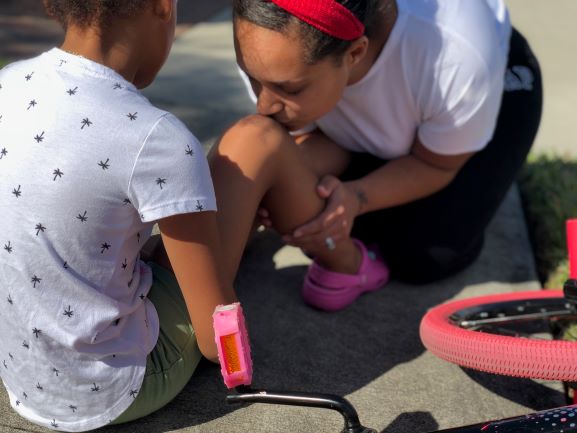
Remember when you were a child and you fell down and skinned your knee? After your knee was cleaned up and the bandaid applied, the thing that helped the most was Mommy or Daddy kissing it and making it better. That tender, loving care, the TLC, felt like the magic potion that healed the pain.
As we grow into adults and experience a skinned knee or worse, we often forget about the magic potion, the TLC. But it hasn’t lost its power.
In my many years of practice as a Physical Therapist and Zero Balancing practitioner, I’ve worked with hundreds of people who are in pain. Some for a few months and some for several years. And I’ve observed, without exception, that when clients consciously choose self-care and pain management, a healing event has occurred. The trajectory of their healing path changes and moves upward towards well-being. This self-administered TLC has the same curative power as the kiss your knee received as a child.
What’s the explanation for this phenomenon? This is my hypothesis: the TLC, the attention and care in response to pain, changes the energetics of the situation. Let me explain. As a Zero Balancing practitioner, I see people as consisting of both structure and energy. The structure is everything in the body that can be seen, like bones and muscles and blood. The energy is everything in the body that is unseen, like thoughts and memories and vitality. Structural issues are usually the focus of western medicine and energetic issues are usually the focus of eastern medicine. Zero Balancing bridges western and eastern medical thought by addressing the relationship between your structure and your energy, by seeing people as both structure and energy. From this perspective, when you skinned your knee as a child, your structure was injured. Your skin was abraded, you bled, your nerve endings signaled injury and pain to your brain. The kiss, the TLC, was an energetic exchange. The love conveyed by the kiss was as necessary to your healing process as cleaning and covering the wound.
It’s been my observation that as adults, we often forget about the TLC, this energetic aspect of healing. Or we think to offer it to others but not to ourselves. Some introspection may reveal why the value of self-TLC has fallen through the cracks. I suspect the reasons are as individual as each of us. And if you’re in miserable pain, the “whys” are less important than the alleviation of your suffering. What’s important is adding the TLC component to the treatment approach.
This is one reason I work closely with my clients to help them create a Pain Control toolbox. The toolbox we are most familiar with is the one in the garage or utility closet. It may contain a hammer and a screwdriver and a variety of other tools. Often the garage toolbox gets filled as the needs arise. You want to hang a picture so you buy a hammer.
A Pain Control toolbox is analogous to the toolbox in your garage to some extent. When pain occurs, most of us have not bought the tools ahead of time. It’s human nature. Many of us do nothing, hoping the pain will just go away. That’s human nature too.
And sometimes the pain does just go away. That’s great! If it doesn’t, we may search the Internet or ask a doctor or PT what the best medication would be, or whether heat or ice is better. We are looking for tools. From my perspective, even this act of seeking tools to help the pain is TLC. So you have already started the magic.
Another aspect of the TLC is filling your Pain Control toolbox with tools you like. While simple, this is a powerful statement. Think about the last time you felt cared for by someone. It’s likely they said or did something you liked. If you put a heating pad on a sore back muscle, on a structural level, the heat may help the muscle to relax. If you really like heat and feel comfy and warm in a comfortable chair with the heating pad, it seems to work even better. That, along with the fact that you thought to use a heating pad, and gave yourself the time, is the TLC part. You helped both your structure and your energy. You helped all the parts of yourself.
The next article will contain ideas and strategies for creating your own Pain Control toolbox. In the meantime, you don’t have to wait to get started. Look around your home and identify the tools you tend to use most often when you’re in pain. These are already in your toolbox. If this article has made you realize you don’t do much for yourself when in pain, you are not alone! And it’s never too late. Search the internet or ask a healthcare professional for some suggestions and try a few things out. Remember, the act of seeking pain remedies is self-TLC. When you find something you like, even if it helps just a little, you’ve started your toolbox.
